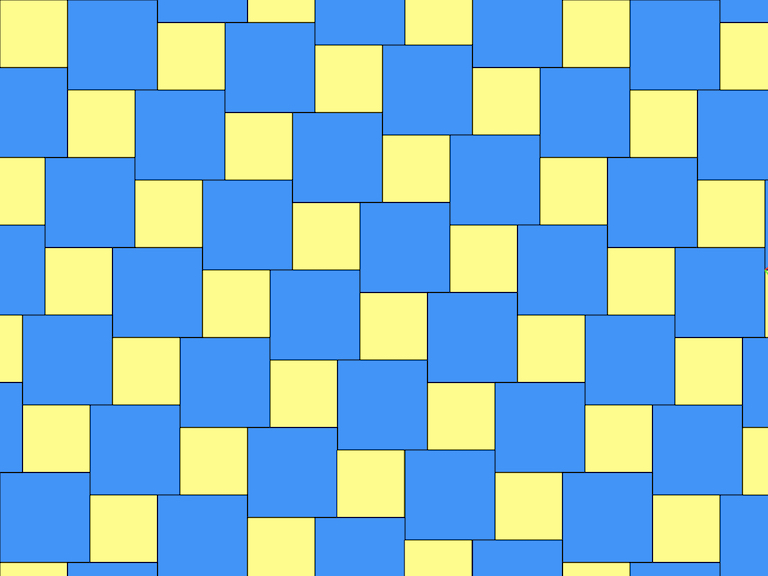
We tile the plane in two ways. First with blue and yellow squares as shown. Each yellow square is adjacent to four larger blue squares, and each blue square is adjacent to four yellow squares and four blue squares.
Second, we tile the plane with diagonal quadrilaterals formed by connecting the lower left vertex of each blue square with the lower left vertex of each blue square that's adjacent to the original square. These edges are shown in black.
The mouseover slide highlights a single quadrilateral thus created.
We use the above tessellation to prove the Pythagorean Theorem. Consider the figure below consisting of a blue square A of side a, a yellow square B of side b, and a red line segment drawn from the lower left corner of A to the upper left corner of B as shown. Let the length of the line segment be c.
We may tile the plane with such figures, as shown below in the mouseover slide.
We're guaranteed that at each stage of the tiling process the number of blue squares A will always equal the number of yellow squares B. Also, the number of diagonal red line segments will equal the sum of the number of blue and yellow squares.
Next we connect the endpoints of the red line segments using diagonal green line segments, as shown below in the mouseover slide.
By placing the origin at the corner of any blue or yellow square, we're guaranteed that the coordinates of all vertices in the resulting tiling of squares will be of the form (ma + nb, pa + qb), where m, n, p, and q are integers. That is, the coordinates of all vertices are linear combinations of a and b, with the coefficients being integers.
We're also guaranteed that the coordinates of all of the vertices of the red and green lattice will be of the same form, as these vertices form a subset of the vertices of the blue and yellow squares.
We wish to show that a quadrilateral thus formed, consisting of two red line segments and two green, is a square. It's sufficent to show that the quadrilateral is a parallelogram, and that at least one of its vertices is a right angle.
To establish that opposite sides are parallel, we observe that the slope of each red line segment is b/a, and the slope of each green segment is −a/b.
Furthermore, the product of the slopes of adjacent edges in the parallelogram is always −1. Therefore, all angles are right angles.
Thus there's a one-to-one correspondence between red line segments and squares of side c. It follows that a2 + b2 = c2.